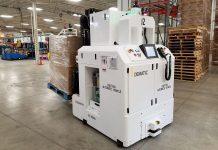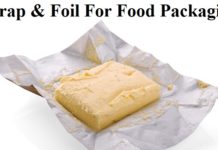The automotive sector is undergoing significant packaging advancements due to increasing global demand for vehicles and related components. This shift is driven by the replacement of mechanical systems with electronic assemblies, altering automotive packaging requirements.
In 2022, the global automotive packaging market reached a value of USD 8,180 million and is projected to reach USD 13,870 million by 2032, growing at a CAGR of 5.4% from 2023 to 2032. Predictions from Precedence Research indicate a market size of approximately USD 11,830 million by 2029.
Within this context, two key trends are emerging in response to spare parts demand. Firstly, there’s a move towards minimizing empty packaging volume and optimizing space usage to enhance efficiency and reduce waste. Secondly, advancements in production technology are leading to cost-effective disposable packaging options to meet the automotive industry’s cost-efficiency needs.
The automotive sector is increasingly adopting reusable packaging for heavy components such as underbody parts, engines, and cooling systems. This transition to reusable options is driven by material science breakthroughs. Developments in economically viable and biodegradable plastics have expanded disposable packaging choices for automotive parts.
These packaging trends highlight the industry’s commitment to sustainability and cost efficiency. Incorporating reusable packaging and environmentally friendly disposable materials contributes to the growth of the automotive packaging market. Protective packaging is a significant player in this market, accounting for over one-third of market share. Fragile electrical and electronic components necessitate proper protection during packaging and transportation. However, the disposable nature of protective packaging results in considerable waste generation.
In response to eco-friendly demand and the cost of biodegradable plastics, corrugated packaging has gained traction in the automotive sector. Corrugated packaging provides sustainable alternatives while safeguarding automotive parts, and its use is anticipated to continue growing.
Flexible packaging, especially bags and pouches, is witnessing rapid growth in the automotive sector. Lightweight and durable packaging for small automotive components are driving this growth. The bags and pouches segment is expected to have the highest growth rate in the automotive packaging market.
The shift towards eco-friendly and lightweight packaging options reflects evolving trends in the automotive sector. Manufacturers are prioritizing sustainable practices and innovative solutions to meet the industry’s diverse packaging needs. The integrated circuit (IC) packaging industry is booming in the automotive market, driven by automation and enhanced vehicle performance demands. This shift aims to make automobiles more reliable and intelligent. To cater to these complex requirements, the semiconductor packaging sector is developing advanced packaging solutions like flip chip and advanced fan-out packages for applications like GPS and automotive infotainment.
While traditional wire-bond technology was used for automotive IC packaging, the industry is moving towards high-performance flip chip and advanced fan-out packages due to increased complexity and performance expectations.
This offers a comprehensive overview of evolving packaging in the automotive industry. It covers the transition from wire-bond to flip chip and advanced fan-out wafer-level packages. Here are the advantages and disadvantages of each packaging technology, considering factors like reliability, cost, assembly processes, and optimal bill of materials selection.























